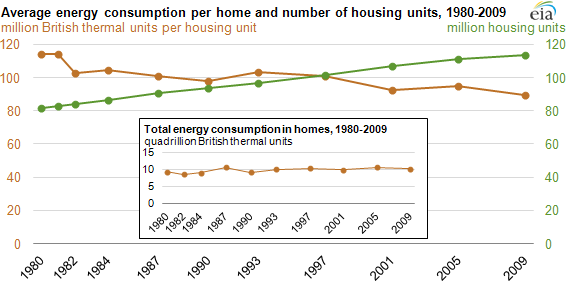




the average american car puts 4 tons of CO2 into the air per year.
the average montana house heated with natural gas puts 8.9 tons of CO2 into the air per year (2.2 cars)
the average montana house heated with electricity puts 29.4 tons of CO2 into the air per year (7.4 cars)
the average montana house heated with a conventional wood stove puts 4.4 tons of CO2 into the air per year (1.1 cars)
the average montana house heated with a rocket mass heater puts 0.4 tons of CO2 into the air per year (0.1 cars)




 1
1












paul wheaton wrote:I wonder if there can be such a thing as a "typical home" in montana.
Then, I wonder about how much CO2 goes into the atmosphere if you heat with natural gas, electricity or a conventional wood stove.
Anybody know anything like that?












Freakin' hippies and Squares, since 1986
 1
1




paul wheaton wrote:This is interesting:

source
Projects, plans, resources - now on the Permies.com digital marketplace.
Try the Everything Combo as a reference guide.




 So the conversion efficiency of all the sources combined is 34 percent. It has been impossibly hard to get to the bottom of everything that needs to be summed for a proper carbon footprint analysis. It seems clear that burning coal is leading the way in emissions, and that almost anything else would be a more ecological substitute. Other than that it's tough to draw too many sweeping generalizations because of local availability and other variables.
So the conversion efficiency of all the sources combined is 34 percent. It has been impossibly hard to get to the bottom of everything that needs to be summed for a proper carbon footprint analysis. It seems clear that burning coal is leading the way in emissions, and that almost anything else would be a more ecological substitute. Other than that it's tough to draw too many sweeping generalizations because of local availability and other variables.  3
3





 1
1




Projects, plans, resources - now on the Permies.com digital marketplace.
Try the Everything Combo as a reference guide.








Erica Wisner wrote:
How can electricity have a 98% conversion efficiency, if it's sourced from a grid with losses that exceed 30%?
I really don't know how to do "apples to apples" when comparing entire systems of different technologies.
-Erica
Nerds be nerding...




Freakin' hippies and Squares, since 1986
 2
2




Projects, plans, resources - now on the Permies.com digital marketplace.
Try the Everything Combo as a reference guide.




Cassie Langstraat wrote:Using the conversion of 1.027 therms = 1 cubic foot. The average single-family home uses 48,734 therms a year. The U.S. EPA estimates that 0.005 metric tons CO2 are emitted per therms of natural gas burned.






 2
2








Freakin' hippies and Squares, since 1986




Landon Sunrich wrote:Cassie,
I'm not sure I'm following your math or not. I haven't done any for way long either.
You are saying you made a ten fold error in CO2 (5ish/55ish tons) but underestimated by half the volume of natural gas used (43,000/96,000 cubic feet)?




Community Building 2.0: ask me about drL, the rotational-mob-grazing format for human interactions.




Freakin' hippies and Squares, since 1986
 1
1




paul wheaton wrote:
source
Projects, plans, resources - now on the Permies.com digital marketplace.
Try the Everything Combo as a reference guide.
 2
2




Projects, plans, resources - now on the Permies.com digital marketplace.
Try the Everything Combo as a reference guide.




And how do we measure the cost of contaminated groundwater and aquifers from mining, frakking, etc?
These are not carbon output - they are other pollution - but if they result in populations having to move, or transport their water over longer distances, or use more electricity to pump from a deeper well, that's a hidden impact too.





 1
1




Community Building 2.0: ask me about drL, the rotational-mob-grazing format for human interactions.
 1
1




 1
1




Joshua Myrvaagnes wrote:
Lastly, it's *kind of* apples-to-apples comparision if you say "I took one car off the road" with "I took one house off the gas grid" since the transportation, extraction, and so on, of the fossil fuels ought to be roughly the same. Also, both are non-renewables without a really long time-span (millions of years) vs. the wood which is a few years.

|
We should throw him a surprise party. It will cheer him up. We can use this tiny ad:
2024 Permaculture Adventure Bundle (now a special for october 2025)
https://permies.com/w/bundle
|








